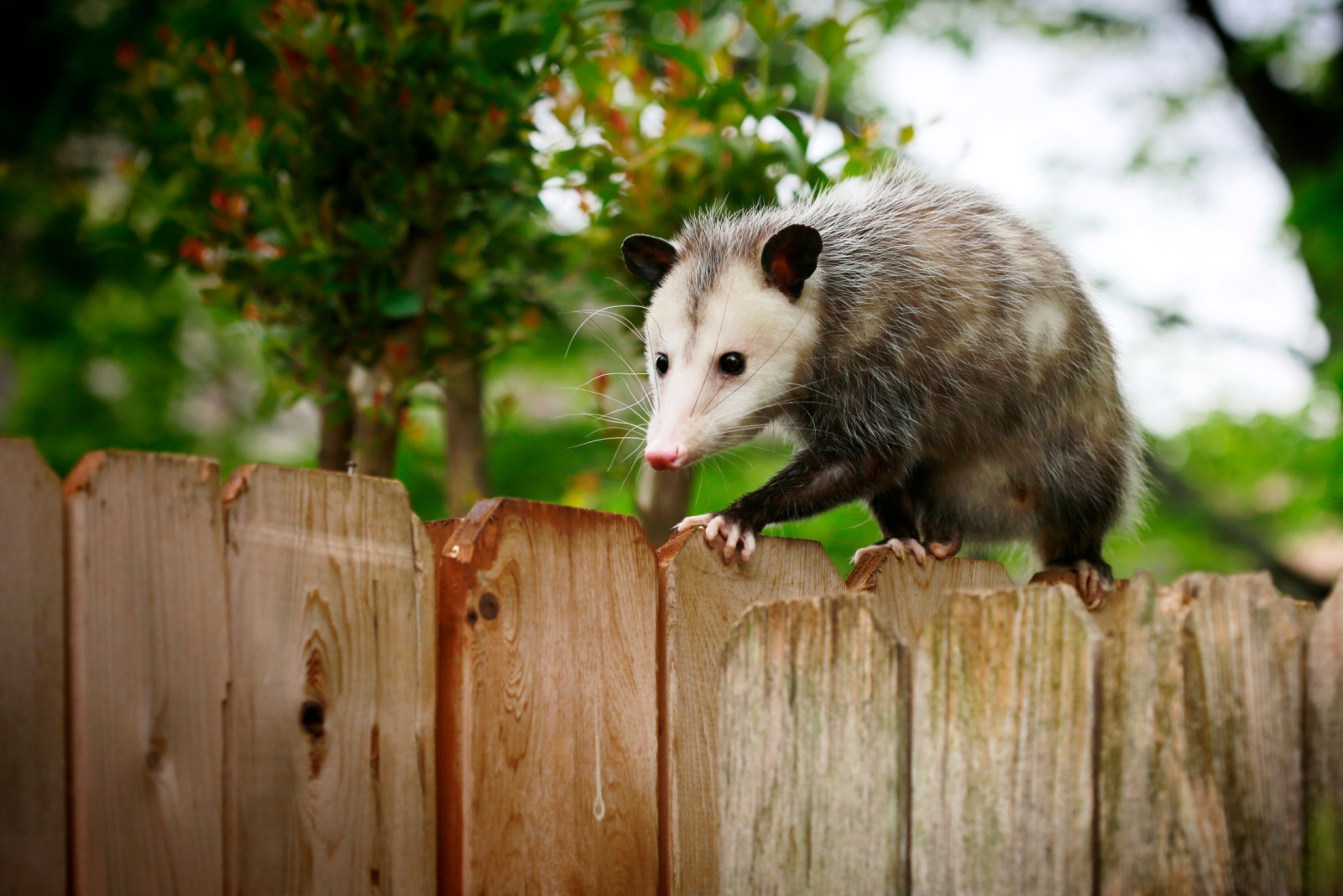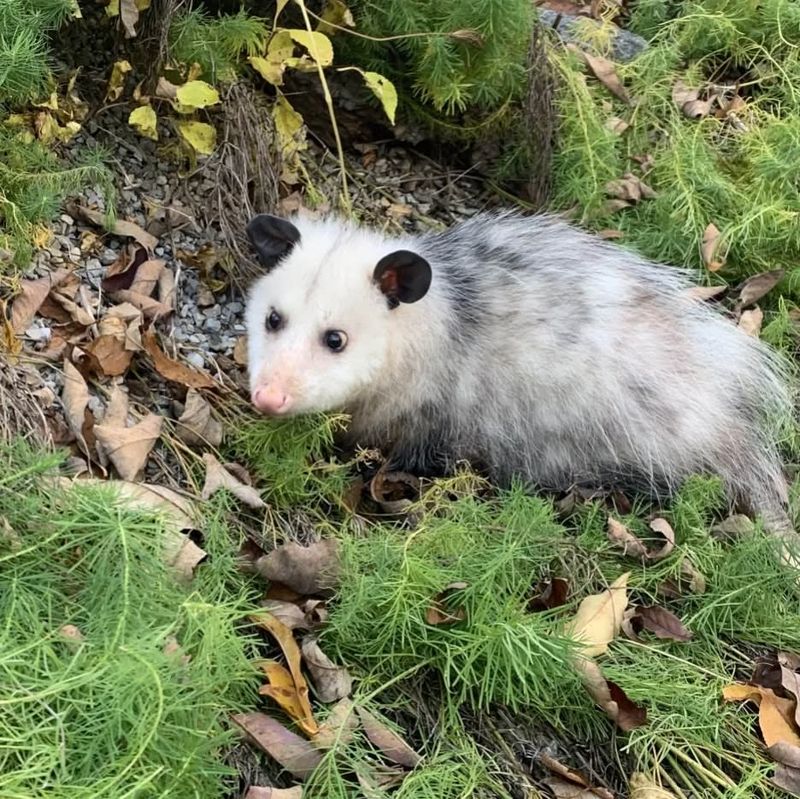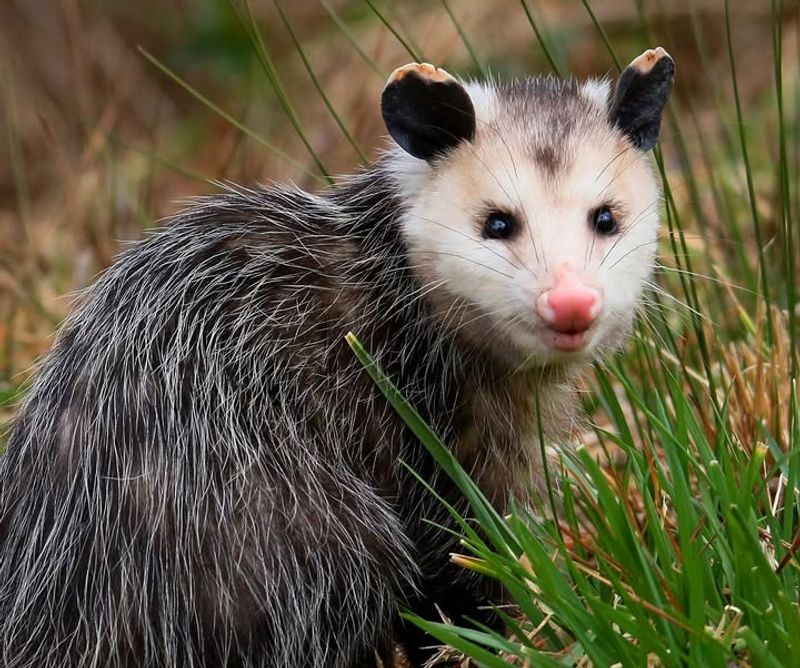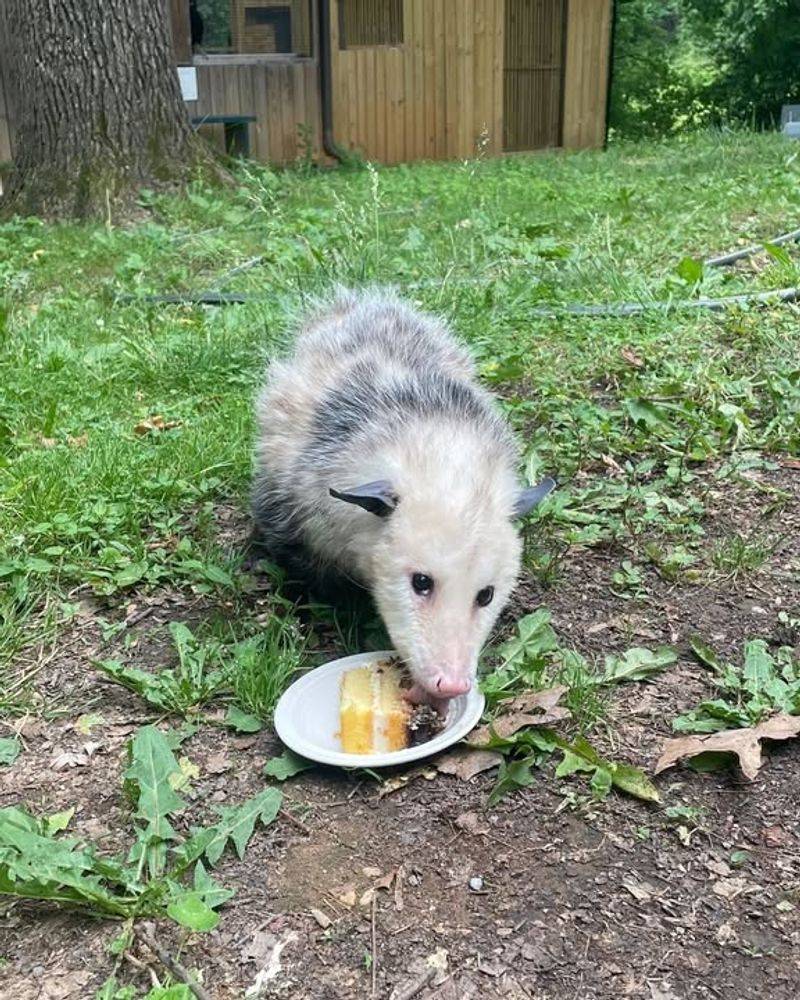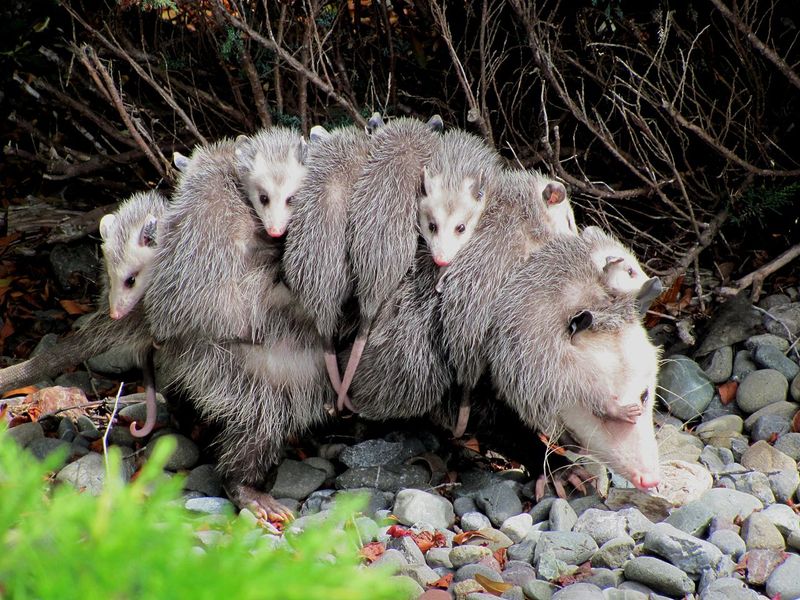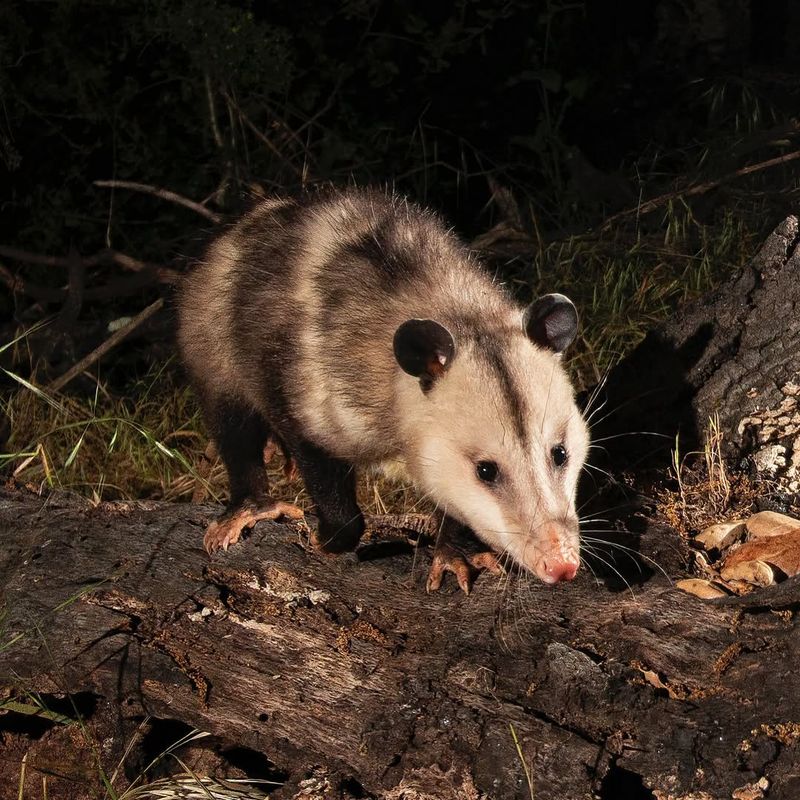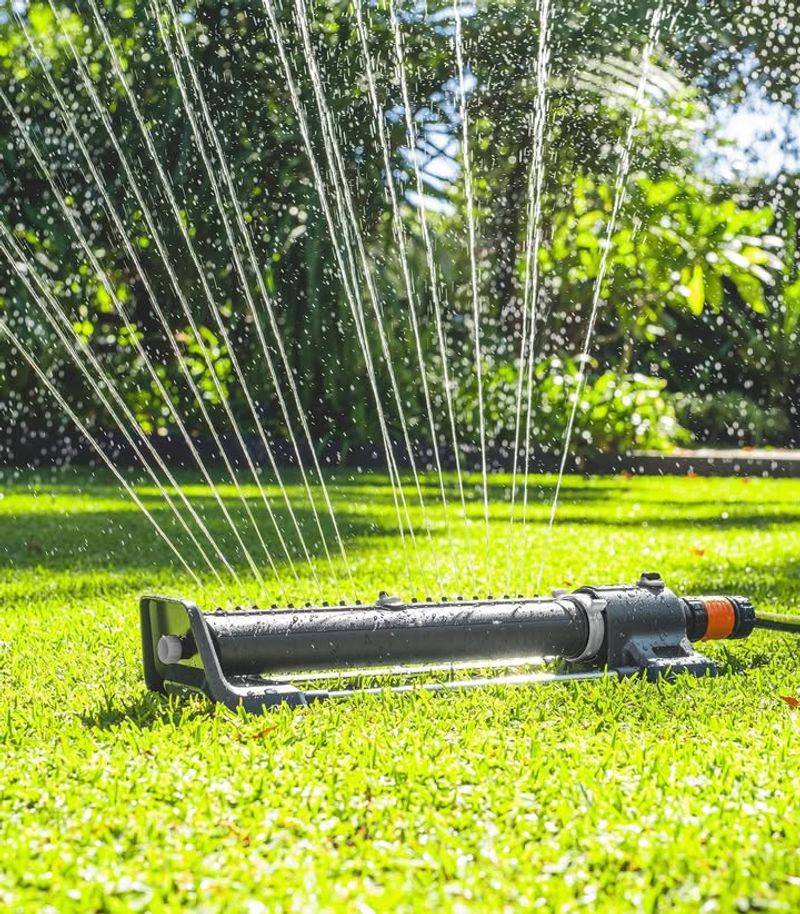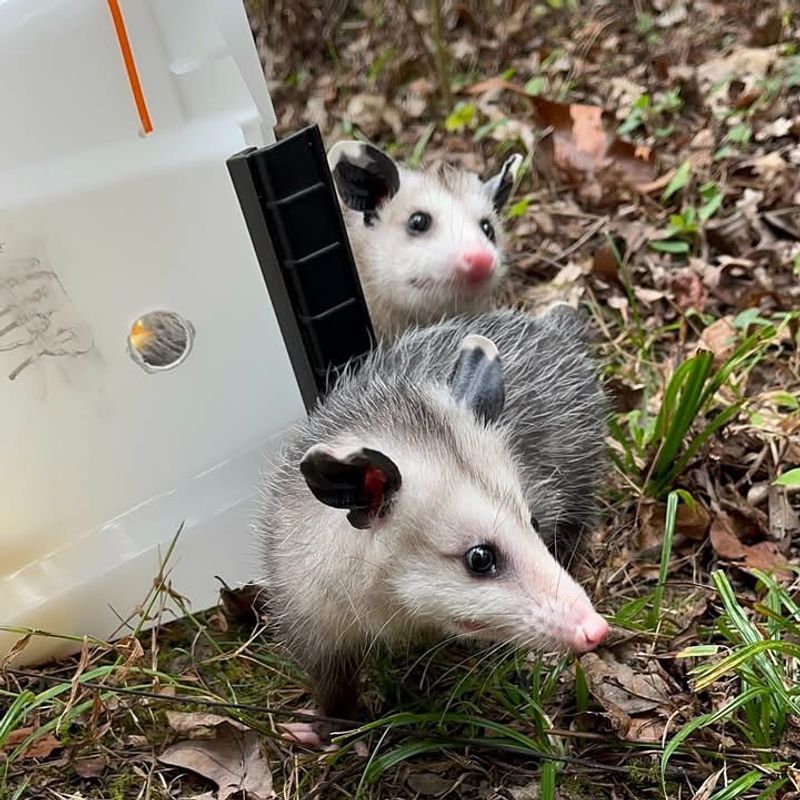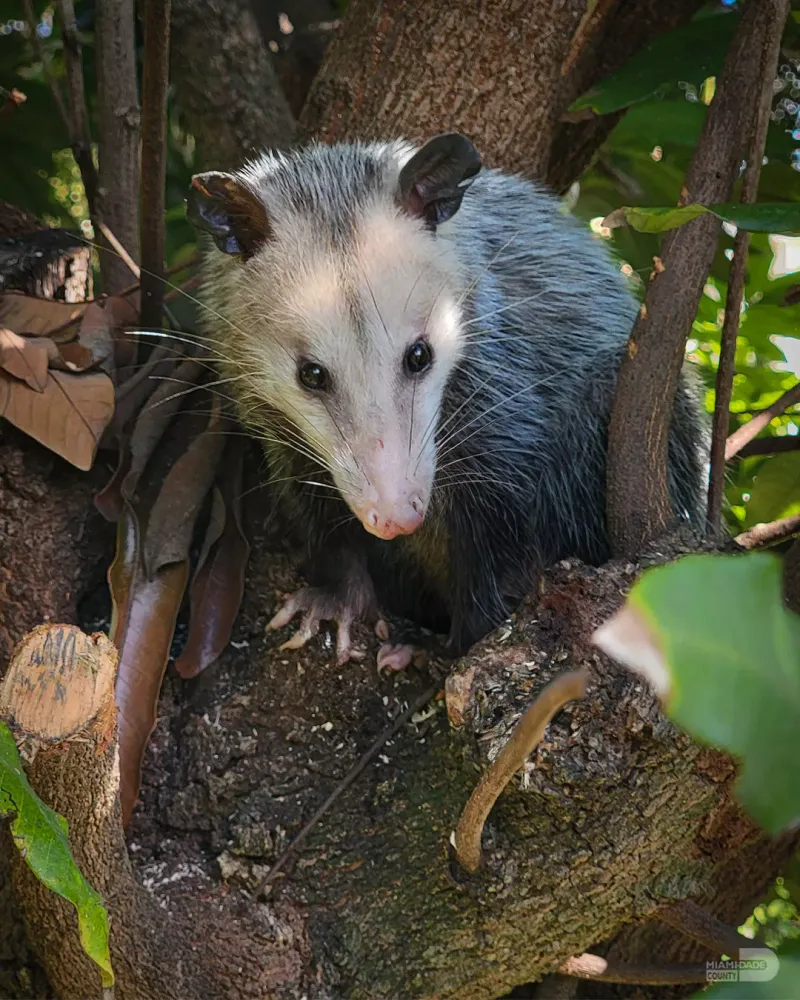An opossum strolling through your Texas yard might look like trouble, but staying calm and knowing what to do can make the whole situation smooth as butter.
These nighttime visitors are far more helpful than harmful, and a few smart moves can keep your yard safe while letting the little wanderer mosey on without a fuss.
1. Stay Calm And Keep Your Distance
Spotting an opossum doesn’t mean danger is near.
Most people panic unnecessarily, but opossums are non-aggressive creatures that prefer avoiding conflict altogether.
Keeping at least ten feet away gives the animal space to feel secure.
Your calm demeanor prevents the opossum from feeling threatened or cornered.
Sudden movements or loud noises might startle it, causing unpredictable reactions.
Breathing deeply and observing quietly helps everyone stay relaxed during this unexpected wildlife encounter in your Texas yard.
2. Observe From Behind A Window Or Screen
Windows provide the perfect viewing spot for watching wildlife safely.
From inside your home, you can monitor the opossum without interfering with its natural behavior patterns.
Screens create a protective barrier while letting you see everything clearly.
Your presence behind glass won’t alarm the animal as much as standing outdoors would.
Grab your phone or camera to document this special moment.
Watching from inside also protects children and pets from getting too curious about your unexpected marsupial visitor.
3. Bring Pets Indoors Immediately
Dogs and cats often react aggressively toward unfamiliar animals in their territory.
While opossums rarely attack first, they will defend themselves if a pet corners them.
Calling your pets inside prevents unnecessary confrontations and potential injuries.
Opossums have fifty sharp teeth that can cause serious wounds when threatened.
Even vaccinated pets risk infection from bites or scratches during wildlife encounters.
Keeping animals separated ensures everyone stays healthy and the opossum can leave peacefully without drama.
4. Turn Off Outdoor Lights Temporarily
Bright lights can disorient nocturnal creatures like opossums that rely on darkness for navigation.
Switching off porch lights and floodlights helps the animal feel more comfortable moving through your space.
Darkness encourages the opossum to continue its journey elsewhere.
These marsupials are naturally shy and prefer shadowy areas where they feel protected from predators.
After fifteen or twenty minutes in darkness, most opossums will wander away on their own.
This simple action respects their nocturnal lifestyle while gently encouraging departure.
5. Remove Food Sources And Water Bowls
Pet food left outside acts like a restaurant sign for hungry opossums.
These opportunistic eaters will return repeatedly if they find easy meals in your yard.
Water dishes also attract thirsty wildlife, especially during hot Texas summers.
Bringing these items inside eliminates the main reason opossums visit residential properties.
Fallen fruit, bird seed, and garbage should also be secured properly.
Once food disappears, opossums typically move along to find better feeding grounds elsewhere in the neighborhood.
6. Check For Babies Before Taking Action
Female opossums carry their young in pouches and later on their backs.
Separating mothers from babies causes unnecessary suffering and orphans rarely survive alone.
Look carefully for tiny pink or gray babies clinging to the adult’s fur.
Spring and summer are peak breeding seasons when you’re most likely to spot families together.
If you see babies, give the entire family extra time and space to relocate naturally.
Patience ensures baby opossums stay with their mother for proper care and survival.
7. Never Corner Or Trap The Animal
Trapped animals become desperate and unpredictable, even naturally docile ones like opossums.
Blocking exits forces them into defensive mode, increasing bite and scratch risks significantly.
Always ensure the opossum has multiple escape routes available.
Open gates, clear pathways, and unobstructed fence lines help the animal leave voluntarily without panic.
Cornered opossums may hiss, bare their teeth, or even hide from extreme stress.
Giving them freedom to choose their exit prevents traumatic encounters for everyone involved.
8. Wait Patiently For Natural Departure
Most opossum visits last only fifteen to thirty minutes before they move along naturally.
These wandering marsupials are just passing through while searching for food, water, or shelter.
Resisting the urge to intervene often works best for quick resolutions.
Opossums have their own agenda and rarely stay in one spot for extended periods.
Checking periodically from your window lets you monitor progress without interference.
Patience rewards you with a peaceful resolution where the opossum simply disappears back into the Texas night.
9. Use Gentle Deterrents If Needed
Sometimes opossums need a gentle nudge to move along faster.
Motion-activated sprinklers work wonderfully as harmless deterrents that startle without harming the animal.
Loud sounds like clapping or banging pots can also encourage departure.
Keep your distance while making noise to avoid seeming threatening or aggressive toward the visitor.
Ammonia-soaked rags placed near their location create unpleasant odors that opossums dislike.
These humane methods respect the animal while protecting your property from extended visits or den-building attempts.
10. Contact Wildlife Professionals If Necessary
Some situations require expert assistance, especially if opossums become aggressive or refuse to leave.
Licensed wildlife rehabilitators understand opossum behavior and use humane removal techniques.
Injured or sick opossums need professional medical attention that homeowners can’t provide.
Texas wildlife services can safely transport animals to rehabilitation facilities for proper care.
Repeated visits or den establishment also warrant professional intervention.
Experts identify why opossums keep returning and implement long-term solutions that protect both your property and local wildlife populations effectively.
11. Appreciate Their Pest Control Benefits
Did you know opossums eat thousands of ticks each season?
They’re nature’s vacuum cleaners, consuming pests that spread Lyme disease and other illnesses to humans and pets.
These marsupials also devour cockroaches, beetles, snails, and even venomous snakes.
Their varied diet makes them valuable allies in maintaining healthy, balanced Texas ecosystems.
Rather than viewing them as nuisances, consider opossums helpful neighbors.
Their presence actually reduces pest populations around your home, creating a cleaner environment for your family naturally.

